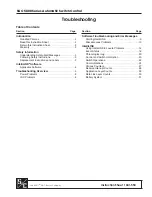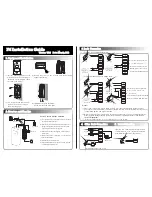Chapter 4 Clock Description
MPC5602P Microcontroller Reference Manual, Rev. 4
Freescale Semiconductor
93
4.8.6
Functional description
4.8.6.1
Normal mode
In Normal mode, the PLL inputs are driven by the Control Register (CR). This means that when the PLL
is locked, the PLL output clock (PHI) is derived from the reference clock (XOSC) through this
relationship:
Eqn. 4-1
where the value of
idf
(Input Division Factor),
ldf
(Loop Division Factor), and
odf
(Output Division Factor)
are set in the CR as shown in
.
idf
and
odf
are specified in the IDF and ODF bitfields, respectively;
ldf
is specified in the NDIV bitfield.
4.8.6.2
Progressive clock switching
Progressive clock switching allows to switch system clock to PLL output clock stepping through different
division factors. This means that the current consumption gradually increases and, in turn, voltage
regulator response is improved.
This feature can be enabled by programming bit en_pll_sw in the CR. Then, when the PLL is selected as
the system clock, the output clock progressively increases its frequency as shown in
FM_EN
Frequency modulation enable
The FM_EN bit enables the frequency modulation.
0: Frequency Modulation disabled
1: Frequency Modulation enabled
INC_STEP
Increment step
The INC_STEP field is the binary equivalent of the value incstep derived from following formula:
where:
md
: represents the peak modulation depth in percentage
(Center spread — pk-pk = ±md, Downspread — pk-pk = –2 × md)
MDF
:
represents the nominal value of loop divider (NDIV in PLL Control Register).
Table 4-8. Progressive clock switching on pll_select rising edge
Number of PLL output clock cycles
ck_pll_div frequency (PLL output frequency)
8
(ck_pll_out frequency)
8
16
(ck_pll_out frequency)
4
32
(ck_pll_out frequency)
2
Table 4-7. MR field descriptions (continued)
Field
Description
incstep
round
2
15
1
–
md
MDF
100 5
MODPERIOD
---------------------------------------------------------------
=
phi
xosc ldf
idf odf
-----------------------
=


















